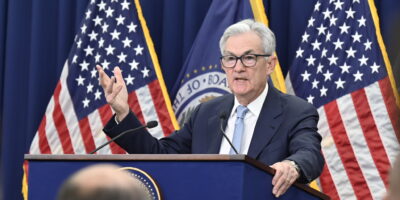Central banks and foreign exchange markets
In addition to turmoil in common stock markets around the world, the early weeks of the new year have been characterized by changes in—and much hand wringing about—exchange rates between currencies. Prospects for changes in currency exchange rates were also much in the financial news a year ago, with considerable confusion about what was happening and what it all meant (see here.)
This year’s reporting has added to the confusion because central bank actions in the face of pressures on national currency exchange rates can have domestic policy implications. And, in some reporting, cause and effect are not clear. Because for any two currencies there is only one exchange rate, assertions that one currency is “weak” and another is “strong” cannot be ascertained merely by the change in the exchange rate between the two. Furthermore, either one—or both—of the central banks may take actions that are different than would have occurred in absence of the changing exchange rate, so the domestic implications are not easy to sort out.
It is often said that central banks are the only outfits that can expand or contract their own balance sheets with the ‘stroke of a pen’ (so to speak). While today everything is digital, that doesn’t alter the fact that central banks create liabilities on themselves—expand their balance sheets—when they acquire an asset. It doesn’t matter whether the asset is domestic securities or foreign-currency assets. The central bank balance sheet is expanded unless they simultaneously sell other assets; if they do, it is called “sterilization.” When the central bank sells assets—whether domestic-currency securities or foreign-currency assets—the balance sheet shrinks. That simple fact of accounting does not tell us anything about the stance of monetary policy.
Recent reports that the central bank of China has been “intervening” to slow the depreciation of the yuan against other currencies have often included commentary that Chinese central bank sales of “foreign reserves” has a restrictive effect on the domestic economy. But, does it? The idea behind such assertions is that—other things equal—central bank sales of foreign-currency-assets (such and US Treasury securities) shrinks the Chinese central bank balance sheet, and that, per se, is a more restrictive stance of monetary policy. However, to the extent that the downward pressure on the exchange rate reflects decreased demand on the part of Chinese businesses and wealthy individuals to hold yuan (and a desire to diversify asset holdings into other currencies), the net effect may not be contractionary. In the face of decreased demand for yuan, failure to also contract supply would actually be expansionary. To draw any conclusions about monetary policy, one would also have to know whether the central bank is simultaneously buying yuan securities at the same time it sells dollar assets. That information is not readily available.
The central bank of China acquired an enormous (over $4 trillion) portfolio of assets denominated in foreign currencies during the period when China’s exports far exceeded imports. Such “intervention” to acquire dollar and other foreign-currency assets was motivated in part to slow the rise in the exchange rate of yuan against other currencies. This acquisition of foreign reserves was not characterized as expansionary monetary policy, and it is not correct now to say that selling these assets in the face of downward pressure on the yuan is contractionary.
Some reports in the financial press choose to characterize the downward pressure on the yuan exchange rate as “capital flight” by Chinese businesses and wealthy individuals; one might just as easily characterize it as a rational desire to diversify financial asset holdings into more of other major currencies and relatively less in yuan. Whichever characterization one prefers, the end result will be that Chinese businesses and individuals will hold more dollar, euro, and other foreign-currency assets, and the Chinese government/central bank will hold less. One cannot conclude that “China” holds more or less foreign-currency assets.
It is unlikely that the foreign-currency assets acquired by Chinese businesses and individuals will be the same as the foreign currency assets sold by the central bank, so there will be relative-price effects in asset markets in addition to the exchange-rate effects on tradable goods markets. By some estimates, foreign-currency assets of the central bank of China could decline an additional $1 trillion or more in the face of persistent downward pressure on the yuan exchange rate. The alternative, tolerating a much more rapid depreciation of the currency, would have political consequences both within China and in other countries because of the implications for exports and imports of goods and services.
For the near term, while China is likely to continue to have a surplus on current account (exports exceed imports), it will be flows in the capital accounts (efforts by businesses and households to diversify out of yuan assets and into foreign-currency assets) that dominate the pressures on the exchange rate. For the monetary authorities there are only two choices: allow the currency to depreciate at a more rapid rate or slow the pace of depreciation by selling foreign reserves.











